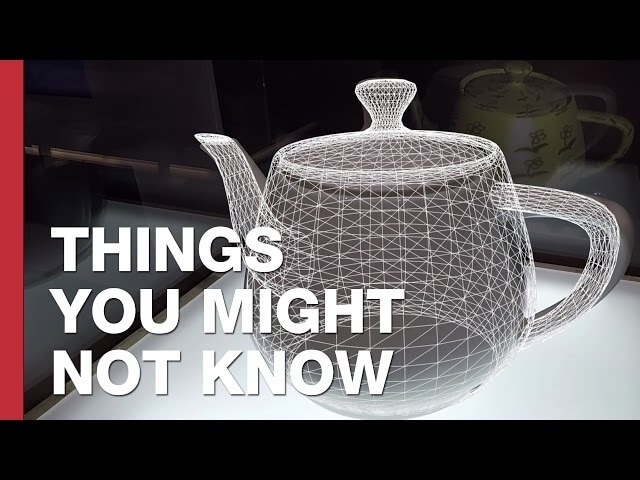Here’s why the same teapot has shown up in Toy Story, The Simpsons, and more

Quick, what’s the most famous teapot in animation history? Mrs. Potts from 1991’s Disney classic Beauty And The Beast? With all due respect to Angela Lansbury, that’s not even close. In an episode of his web series Things You Might Not Know, YouTuber Tom Scott explains the legend of the so-called Utah Teapot, the rightful holder of the title “world’s most famous teapot.” This item has been seen (at least in digital form) by “literally billions of people” over the last 40 years. But how did this seemingly nondescript teapot become so ubiquitous?
The story begins in the mid-1970s at the University Of Utah in Salt Lake City. Computer graphics were still in a formative stage then, and a British-born researcher named Martin Newell needed a simple household object he could replicate using algorithms. His own plain white teapot proved perfect. Besides being instantly recognizable, it had concave and convex surfaces and cast shadows upon itself. Besides, in those primitive days, computer graphics involved a lot of writing by hand on graph paper, so the object could not be too complicated to render.
The Utah Teapot became, Scott says, “the first realistic, complex object to be widely used in computer graphics.” This humble piece of kitchenware has become an in-joke among animators ever since, popping up on The Simpsons and in Pixar movies like Toy Story and Monsters, Inc., as well as in Windows screen savers. Newell’s actual, non-digital teapot is currently housed at the Computer History Museum in Mountain View, CA, and Scott goes there to pay his respects to the legend. In person, it just looks like a small white teapot. Without knowing the backstory, there’s no obvious reason for it to be encased in glass in a museum. And yet, by virtue of having been copied again and again into “all sorts of modern culture,” the Utah Teapot might be the most significant of its kind in history.
[via Mashable]